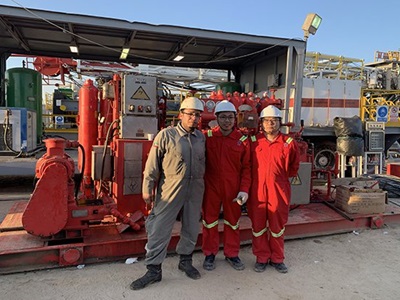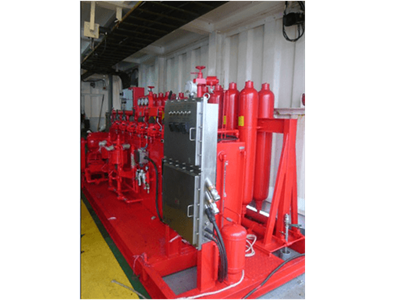In the dynamic and challenging realm of oil drilling operations, the role of blowout preventers (BOPs) stands as a paramount safeguard against potential disasters. Over the decades, the evolution of these crucial devices has been instrumental in enhancing safety measures and mitigating environmental risks associated with the complexities of deep-sea drilling.

The historical roots of blowout preventers can be traced back to the early 1920s when the oil industry was navigating uncharted waters. As drilling depths increased, so did the urgency for a reliable mechanism to control well blowouts, which had the potential for catastrophic consequences. Initial designs were rudimentary, driven by the imperative need for basic well control. These early iterations, though basic, laid the groundwork for the sophisticated technologies we rely on in the modern era.
The narrative of technological advancements in blowout preventers is a compelling journey through the annals of the oil and gas industry. From their humble beginnings in the early 20th century to the present day, blowout preventers have undergone a metamorphosis driven by a relentless pursuit of innovation and a commitment to safety. In the nascent stages, BOPs were characterized by manual and hydraulic controls, requiring human intervention for effective well control. These early designs were crucial for their time but lacked the sophistication needed to navigate the evolving challenges of drilling operations.
As the industry delved deeper into the complexities of oil extraction, the need for more advanced and automated systems became apparent. The mid-20th century witnessed a transformative shift, with blowout preventers evolving into highly automated mechanisms. The incorporation of cutting-edge sensors and state-of-the-art materials marked a turning point, enabling these devices to operate more efficiently and respond rapidly to potential well control issues. Real-time monitoring capabilities further enhanced their functionality, allowing for swift decision-making and reinforcing their position as a critical component in the arsenal of safety measures deployed in modern oil drilling operations.
The advent of subsea blowout preventers represents a profound leap forward in the quest for enhanced safety and efficiency in oil drilling operations. Traditionally situated on the drilling rig, BOPs transitioned to the ocean floor, directly above the wellhead, marking a paradigm shift in their deployment. This revolutionary development not only addressed logistical challenges but significantly reduced response times in the event of emergencies, making subsea BOPs an indispensable innovation for offshore drilling.
The deep dive into subsea blowout preventers reveals their pivotal role in unlocking new frontiers for oil exploration. By being positioned on the ocean floor, these systems can effectively control well blowouts even in the harshest underwater environments. This adaptability allows for exploration in deeper waters where traditional BOPs would be impractical. The synergy of advanced materials, robust engineering, and seamless integration into subsea systems underscores the resilience and effectiveness of these devices. As the industry continues to push the boundaries of exploration, subsea blowout preventers stand as a testament to the sector's commitment to technological evolution and the relentless pursuit of safer and more sustainable drilling practices.
The significance of blowout preventers in preventing and managing well blowouts cannot be overstated. Catastrophic events, exemplified by the Deepwater Horizon incident in 2010, highlighted the critical importance of reliable BOPs. These devices function as the ultimate line of defense, swiftly sealing off the wellbore to avert uncontrolled releases of oil and gas into the environment, showcasing their pivotal role in preserving both human lives and the delicate ecosystems of our oceans.
Recognizing their pivotal role, blowout preventers are subject to stringent regulatory frameworks governing their design, maintenance, and operation. Industry standards, such as those established by the American Petroleum Institute (API) and the International Organization for Standardization (ISO), serve as guiding principles for the manufacturing and implementation of these safety-critical devices. Compliance with these standards is not just a legal requirement but a testament to the industry's commitment to ensuring the highest levels of safety in oil drilling operations.

Even with their advanced capabilities, blowout preventers encounter ongoing challenges. Harsh environmental conditions, extreme pressures, and the imperative for continuous improvement in blowout prevention necessitate a constant pursuit of innovation. Ongoing research initiatives focus on developing fail-safe technologies, improving materials, and enhancing the overall reliability of these devices to ensure they meet the evolving demands of the industry.
In reflecting on the multifaceted evolution and critical importance of blowout preventers in oil drilling operations, it becomes apparent that these devices are indispensable in ensuring the safety of personnel, protecting the environment, and securing the future of the industry. The continuous evolution of BOP technology remains pivotal in meeting the escalating demands of drilling in deeper waters and more challenging environments, underscoring their role as the unsung heroes beneath the ocean depths, silently safeguarding the sustainability and progress of oil exploration and extraction.
By continuing to use the site you agree to our privacy policy Terms and Conditions.